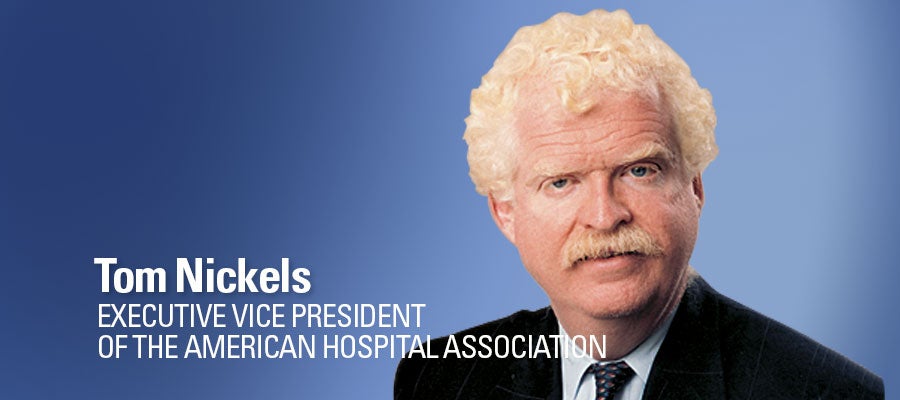Articles
Advocacy & Public Policy
Study on hospital and physician prices misses the mark
The authors of this Health Affairs study on hospital and physician prices use limited data to draw broad conclusions.
340B Drug Pricing Program
340B Working as Intended, Helping to Provide Access to Care in Era of Skyrocketing Drug Prices
As the industry “that generates higher profit margins than any other,” Big Pharma continues to price gouge consumers for life-saving drugs. One thing the pharmaceutical industry is not entitled to, however, is its own set of facts.
Drug Prices
AHA Responds to Axios Article on Hospital Prices
Comparing hospital prices to drug prices is absurd. And although the article claims to be about prices, the chart actually shows National Health Expenditure (NHE) spending numbers, not prices.
Medicare, Uncompensated Care
Medicare Margins Continue to Drop
Axios Vitals recent story on hospitals’ Medicare margins seemed to cherry pick data from a March Medicare Payment Advisory Commission (MedPAC) report to Congress to imply that hospitals “lose money” on Medicare because they are allegedly inefficient.
340B Drug Pricing Program, Drug Prices, Advocacy & Public Policy
Drug Pricing Proposals That Focus on 340B Miss Mark
The U.S. health care system is facing a prescription drug spending crisis fueled by staggering increases in recent years in the price of drugs.
Hospital Field Realignment, Care Coordination
Understanding Hospital and Health System Consolidation
The hearing today by the Subcommittee on Oversight and Investigations on the impact of health care consolidation presented a one-sided perspective on the benefits of hospital mergers. The group presenting was untethered from the realities of managing a high-quality hospital system responsive to the needs of real communities and a rapidly evolving health care landscape. Their views provide a faulty basis on which to base any public policy consideration.
340B Drug Pricing Program
What the Authors of a Recent Study Would Have Learned about the 340B Program Had They Asked
A recent study published in the New England Journal of Medicine on the 340B program includes a number of methodological flaws that invalidate the findings, including one major flaw: how the authors ignored a significant data source in drawing their conclusions.
340B Drug Pricing Program
Major Methodological Flaws Negate Findings from Recent 340B Study
The 340B Drug Savings Program provides eligible providers, many of which are hospitals, with resources to maintain vital services in their communities and to provide additional services to their patients. A recent study published in the New England Journal of Medicine alleges that the 340B program does not expand access to care to low-income populations or improve their mortality rates, while driving hospital/physician consolidation.
340B Drug Pricing Program
GAO Report Misses Mark on 340B Program
A July 6 Government Accountability Office (GAO) report examining Medicare Part B spending at hospitals participating in the 340B Drug Pricing Program draws unsubstantiated conclusions about a program that has a proven track record of improving access to care for poor patients and vulnerable communities. Simply put, the GAO report misses the mark.


